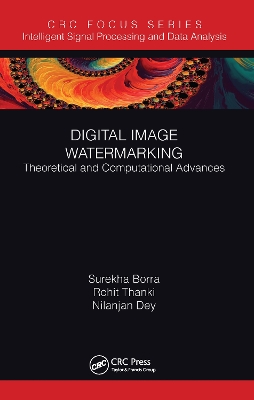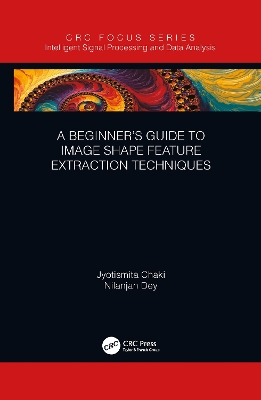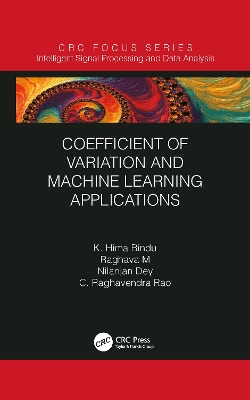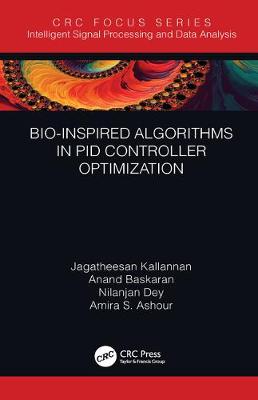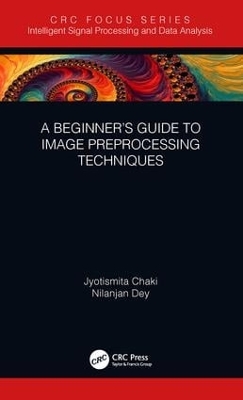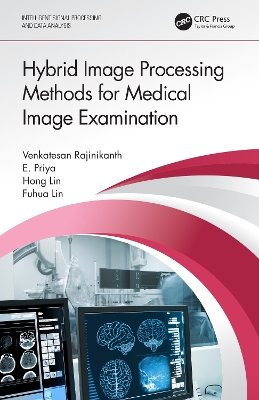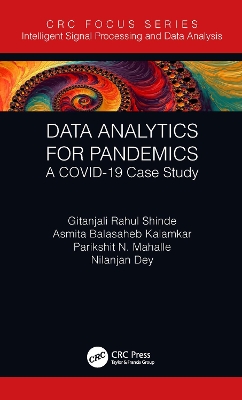Intelligent Signal Processing and Data Analysis
8 total works
Digital Image Watermarking
by Surekha Borra, Rohit Thanki, and Nilanjan Dey
A Beginner’s Guide to Image Shape Feature Extraction Techniques
by Jyotismita Chaki and Nilanjan Dey
This book emphasizes various image shape feature extraction methods which are necessary for image shape recognition and classification. Focussing on a shape feature extraction technique used in content-based image retrieval (CBIR), it explains different applications of image shape features in the field of content-based image retrieval. Showcasing useful applications and illustrating examples in many interdisciplinary fields, the present book is aimed at researchers and graduate students in electrical engineering, data science, computer science, medicine, and machine learning including medical physics and information technology.
Coefficient of Variation and Machine Learning Applications
by K. Hima Bindu, Raghava Morusupalli, Nilanjan Dey, and C. Raghavendra Rao
Coefficient of Variation (CV) is a unit free index indicating the consistency of the data associated with a real-world process and is simple to mold into computational paradigms. This book provides necessary exposure of computational strategies, properties of CV and extracting the metadata leading to efficient knowledge representation. It also compiles representational and classification strategies based on the CV through illustrative explanations. The potential nature of CV in the context of contemporary Machine Learning strategies and the Big Data paradigms is demonstrated through selected applications. Overall, this book explains statistical parameters and knowledge representation models.
Bio-Inspired Algorithms in PID Controller Optimization
by Jagatheesan Kallannan, Anand Baskaran, Nilanjan Dey, and Amira S. Ashour
This book discusses in-depth role of optimization to optimize the controller parameters with reference to bio-inspired algorithms. Comparative studies to evaluate the performance of different optimization techniques in terms of the settling time, overshoot and undershoot responses of the frequency deviations, tie-line power flow deviations, and the area control error are included, supported by examples. The book also includes different scenarios of the load frequency controller for single area as well as multi-area thermal power generating unit considering different algorithms.
Key Features:
Highlights the importance of tuning the power system controller parameters with emphasis on bio-inspiration algorithms
Provides some applied applications/examples of the thermal power system
Focusses on power system applications based on the optimization algorithms with different single area and multi-area thermal power systems
Reports different cases on the interconnected power systems with providing optimal performance by optimizing the controller’s parameters
A Beginner’s Guide to Image Preprocessing Techniques
by Jyotismita Chaki and Nilanjan Dey
For optimal computer vision outcomes, attention to image pre-processing is required so that one can improve image features by eliminating unwanted falsification. This book emphasizes various image pre-processing methods which are necessary for early extraction of features from the image. Effective use of image pre-processing can offer advantages and resolve complications that finally results in improved detection of local and global features. Different approaches for image enrichments and improvements are conferred in this book that will affect the feature analysis depending on how the procedures are employed.
Key Features
- Describes the methods used to prepare images for further analysis which includes noise removal, enhancement, segmentation, local, and global feature description
- Includes image data pre-processing for neural networks and deep learning
- Covers geometric, pixel brightness, filtering, mathematical morphology transformation, and segmentation pre-processing techniques
- Illustrates a combination of basic and advanced pre-processing techniques essential to computer vision pipeline
- Details complications to resolve using image pre-processing
A Beginner's Guide to MultiLevel Image Thresholding
by Venkatesan Rajinikanth, Nadaradjane Sri Madhava Raja, and Nilanjan Dey
A Beginner’s Guide to Image Multi-Level Thresholding emphasizes various image thresholding methods that are necessary for image pre-processing and initial level enhancement.
- Explains basic concepts and the implementation of Image Multi-Level Thresholding (grayscale and RGB images)
- Presents a detailed evaluation in real-time application, including the need for heuristic algorithm, the choice of objective and threshold function, and the evaluation of the outcome
- Describes how the image thresholding acts as a pre-processing technique and how the region of interest in a medical image is enhanced with thresholding
- Illustrates integration of the thresholding technique with bio-inspired algorithms
- Includes current findings and future directions of image multi-level thresholding and its practical implementation
- Emphasizes the need for multi-level thresholding with suitable examples
The book is aimed at graduate students and researchers in image processing, electronics engineering, computer sciences and engineering.
Hybrid Image Processing Methods for Medical Image Examination
by Venkatesan Rajinikanth, E. Priya, Hong Lin, and Fuhua Lin
In view of better results expected from examination of medical datasets (images) with hybrid (integration of thresholding and segmentation) image processing methods, this work focuses on implementation of possible hybrid image examination techniques for medical images. It describes various image thresholding and segmentation methods which are essential for the development of such a hybrid processing tool. Further, this book presents the essential details, such as test image preparation, implementation of a chosen thresholding operation, evaluation of threshold image, and implementation of segmentation procedure and its evaluation, supported by pertinent case studies. Aimed at researchers/graduate students in the medical image processing domain, image processing, and computer engineering, this book:
- Provides broad background on various image thresholding and segmentation techniques
- Discusses information on various assessment metrics and the confusion matrix
- Proposes integration of the thresholding technique with the bio-inspired algorithms
- Explores case studies including MRI, CT, dermoscopy, and ultrasound images
- Includes separate chapters on machine learning and deep learning for medical image processing
Data Analytics for Pandemics
by Gitanjali Rahul Shinde, Asmita Balasaheb Kalamkar, Parikshit N. Mahalle, and Nilanjan Dey
Epidemic trend analysis, timeline progression, prediction, and recommendation are critical for initiating effective public health control strategies, and AI and data analytics play an important role in epidemiology, diagnostic, and clinical fronts. The focus of this book is data analytics for COVID-19, which includes an overview of COVID-19 in terms of epidemic/pandemic, data processing and knowledge extraction. Data sources, storage and platforms are discussed along with discussions on data models, their performance, different big data techniques, tools and technologies. This book also addresses the challenges in applying analytics to pandemic scenarios, case studies and control strategies. Aimed at Data Analysts, Epidemiologists and associated researchers, this book:
- discusses challenges of AI model for big data analytics in pandemic scenarios;
- explains how different big data analytics techniques can be implemented;
- provides a set of recommendations to minimize infection rate of COVID-19;
- summarizes various techniques of data processing and knowledge extraction;
- enables users to understand big data analytics techniques required for prediction purposes.
